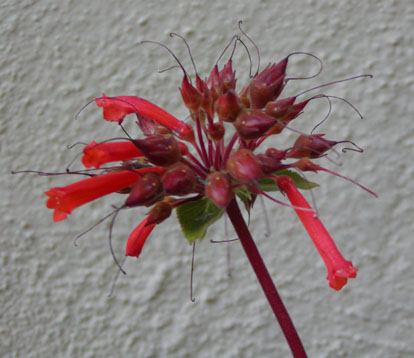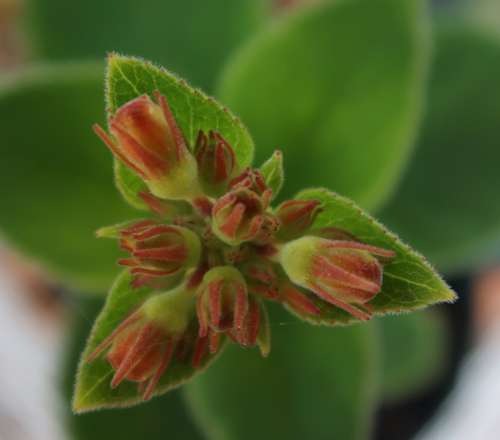Sinningia insularis

Sinningia insularis is an easy-to-grow species with abundant, rather small, reddish-orange flowers.
A distinctive feature of S. insularis is the large shiny red fruits (see picture to the right). This species self-pollinates readily.
The leaves are very firm and stiff, almost as much so as those of Sinningia macrostachya. They are usually in whorls of three. In my yard, this species is tolerant of full sun and occasional drought. I believe it is one of the easiest sinningia species to grow.

